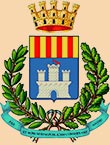Museo dell'intreccio mediterraneo di Castelsardo
Main site sections
Sieves
Of all the containers for food these are the most complex and difficult to make. The fibers used are various and are harvested in late spring, from April to the end of June. Usually cylindrical in shape with straight low walls, they are made up of three basic parts: the base, the filter and the sidewalls.
The base is a perfect circle, made from a length of bramble, elm or oleaster that forms the frame onto which the artifact develops. The filter of the sieve is made with reed stems within a woven mesh of very fine sedge fibers. The sidewalls are made of reeds, reaching a maximum height of 8 centimeters, distributed over a few concentric coils using a twisted stitch with a radial seam.
The maximum diameter at the base and the rim is 56 centimeters. Amongst the various types of sieves there are: sieves made of thick sturdy stems used to remove the larger impurities in milling grain; closer-knit sieves made of reed stems, whole or split, to sieve coarse semolina; closely-knit sieves made of split reed stems to sieve the finest flours.


